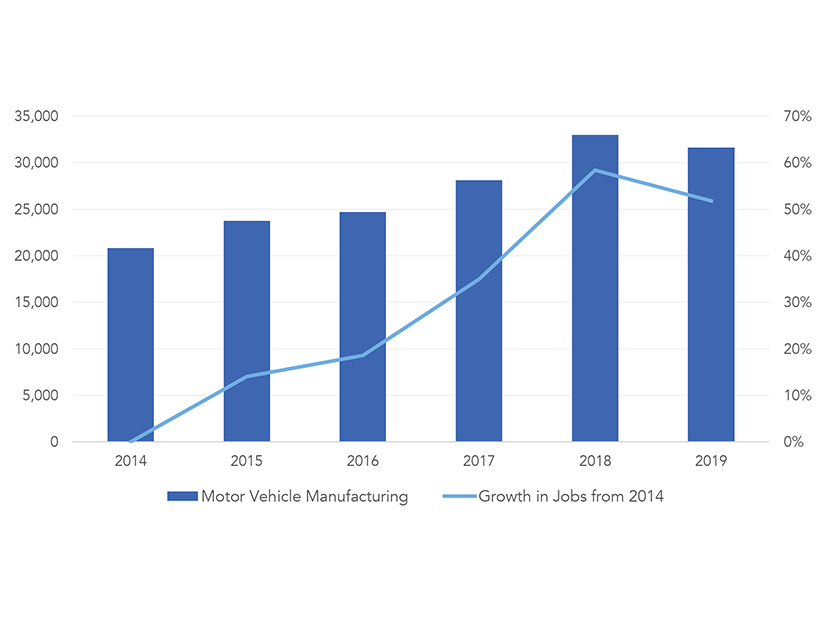California’s job growth in the electric transportation (ET) sector is accelerating, a trend that could be further fueled by extraction of lithium from the Salton Sea, according to a new report.
ET-related employment in California is expected to grow by 79% from 2020 to 2024, reaching 68,400 jobs, says the report from Advanced Energy Economy (AEE).
From 2019 to 2021, the electric transportation sector added 7,700 jobs, an increase of roughly 20%, which the report attributed to an increase in electric vehicle sales despite the COVID-19 pandemic.
AEE hosted a webinar last week to discuss the findings of the report, titled “Electrifying California: Economic Potential of Growing Electric Transportation.” Webinar guests included California Energy Commission Chair David Hochschild, and California Assemblymember Eduardo Garcia.
“I think this validates the notion that transportation electrification is one of the single biggest opportunities for the state of California,” Hochschild said during the webinar.
Hochschild noted that 34 companies are now making EVs in the state. Companies such as BYD and Proterra are shipping electric buses from California to 40 other states.
And EVs became California’s top export for the first time last year, Hochschild said.
Lithium Opportunities
In addition, California has untapped economic opportunities from the Salton Sea, which is in Imperial and Riverside counties in Southern California and is the state’s largest lake. The lake, which is drying up and becoming saltier, is a rich source of lithium that could potentially be extracted and used in EV batteries.
Garcia authored legislation enacted last year to create the Lithium Valley Commission, a 14-member panel that will explore lithium opportunities and report to the state by October 2022. The Salton Sea lies in Garcia’s district. (See California Lithium Extraction Plan Advances.)
“We have a unique opportunity to address both the economic challenges of this region but also address some significant environmental challenges that have been hanging over our heads for many decades that are in and around the issue of the Salton Sea,” Garcia said during the AEE webinar, noting the high levels of unemployment in his district.
Hochschild said that by some estimates, the Salton Sea has enough lithium to satisfy 40% of global demand for the element. He said having a “Lithium Valley” in California could bring battery manufacturing back to the state.
In addition to an in-state market for EVs, Hochschild said a 10-fold increase in battery storage is planned in California this year to increase electric grid resilience. Much of that will be lithium-ion batteries.
“We have the raw material in Assemblyman Garcia’s district; we have the market here in the state,” he said. “We’ve got to kind of bring back those intermediate links to the chain. That’s really part of the vision.”
Jobs Across the State
The AEE report was prepared by BW Research Partnership, a research and consulting firm.
BW Research compiled a database of 21,000 California businesses potentially involved in the ET supply chain. Of those, 4,500 companies were examined more closely to assess their involvement in electric transportation.
The results were used to estimate the total number of ET-related businesses and jobs in the state.
In 2019, California was the top state in electric transportation, with 3,900 ET-related businesses, the report found. Although the jobs are concentrated in the Bay Area, Southern California and capital region, ET-related jobs can be found in 55 of the state’s 58 counties.
“The EV industry growth is unfolding in nearly every corner of the state,” Claire Alford, a policy associate with AEE, said during the webinar.
The ET sector includes a wide range of jobs, from assemblers and fabricators to car mechanics, salespeople, and engineers.
The AEE report also includes policy recommendations for the state, such as developing a skilled workforce, tracking employment trends, and creating long-term policy and market certainty.
“Clear, durable market signals from the governor’s office, California Legislature and state agencies will help ensure California remains a global EV leader as the industry continues to mature,” the report said.



